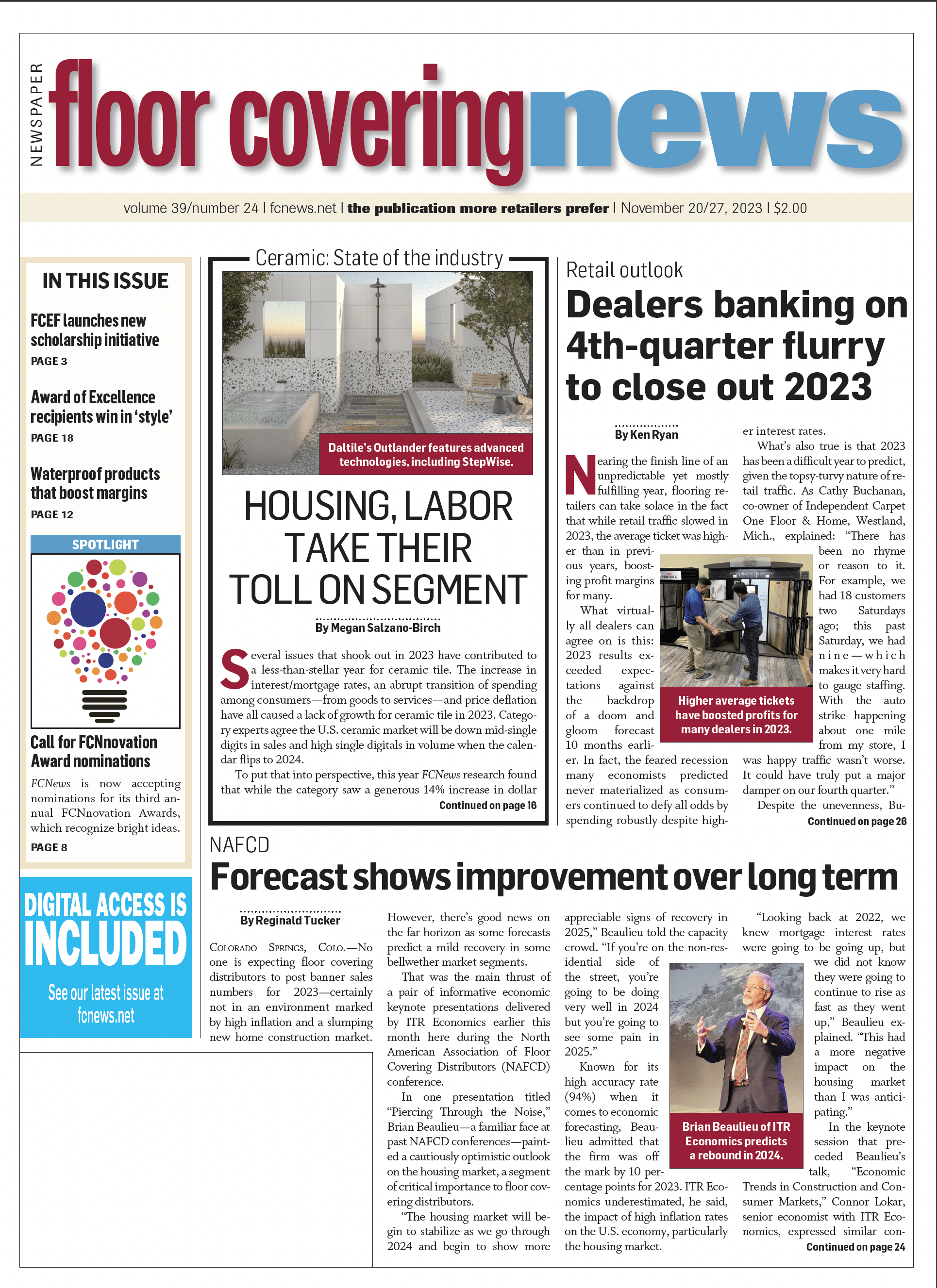 When it comes to delivering a professional-looking installation and ensuring the long-term performance of floorcovering materials, subfloor preparation deserves much more time and attention than it often receives.
When it comes to delivering a professional-looking installation and ensuring the long-term performance of floorcovering materials, subfloor preparation deserves much more time and attention than it often receives.
Without proper subfloor planning, it doesn’t matter how attractive the final floor covering material is. Luxury vinyl tile and expensive hardwood won’t look attractive for long if the subfloor starts to pop and buckle. Simply put, a good floor can’t hide a bad subfloor; it has to start from the bottom up.
One best practice that supports subfloor success is a pre-installation assessment of the environmental factors that will have the biggest impact on how the subfloor materials behave. Typically, the top three conditions that have the greatest effect are:
Moisture. Whether water is present in the existing subfloor or high humidity is present in the air, all forms of moisture in the installation environment must be assessed and addressed before subfloor installation starts. By measuring humidity, noting any water leaks and evaluating airflow, an installer gathers critical data that can then be used to plan for any needed repairs or remediation prior to installation.
Without evaluating moisture conditions first, both the installer and the client are at increased risk for serious and costly issues that can occur later on, such as flooring gaps and buckling. These issues are not only unsightly, but they also create conditions for mold and bacteria growth that can cause health problems for building occupants after the job is complete.
Temperature. Evaluating temperature involves more than just checking the thermostat. It means factoring in several temperatures, locations and conditions to which subfloor materials may be exposed.
For instance, the indoor temperature of a climate-controlled building can be dramatically different from the ambient temperature during construction. Likewise, the temperature where subfloor materials are stored—and even the temperature during transport to the worksite—can affect how the materials behave during and after installation.
Virtually every kind of subfloor component, from adhesives to underlayments, will respond to temperature fluctuations. Adhesive properties may increase or decrease and underlayments may expand or contract. Knowledge of how your subfloor materials react to temperature is critical for accurately calculating measurements and predicting adequate flooring adhesion.
Airflow. Ventilation can either positively or negatively impact the moisture and temperature levels in the area, and this interaction is an important consideration in subfloor preparation. Airflow can be influenced by a variety of conditions. Therefore, airflow must also be assessed for best results.
While flooring manufacturers may dictate the subfloor products and techniques that installers must use, it’s ultimately the installer’s responsibility to account for real-world environmental conditions as they relate to product specifications.
With so much depending on getting the subfloor right, and so many factors contributing to subfloor quality, certification is often the first choice for installers and contractors who want to deliver high-quality work. It’s an effective way to demonstrate that what’s underneath your work is just as high-quality as what’s on top.
David Gross is the new executive director of INSTALL. He previously served as a full-time instructor at the Northeast Carpenter’s Apprenticeship Training Fund in Hamilton, N.J., and he has also sat on the United Brotherhood of Carpenters and Joiners of America executive board.

